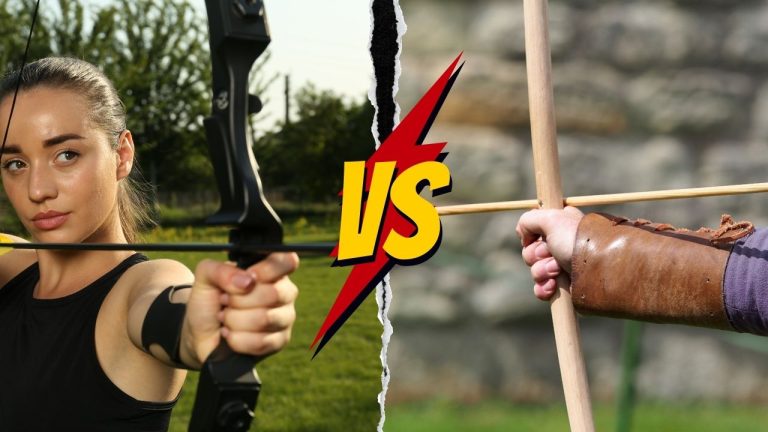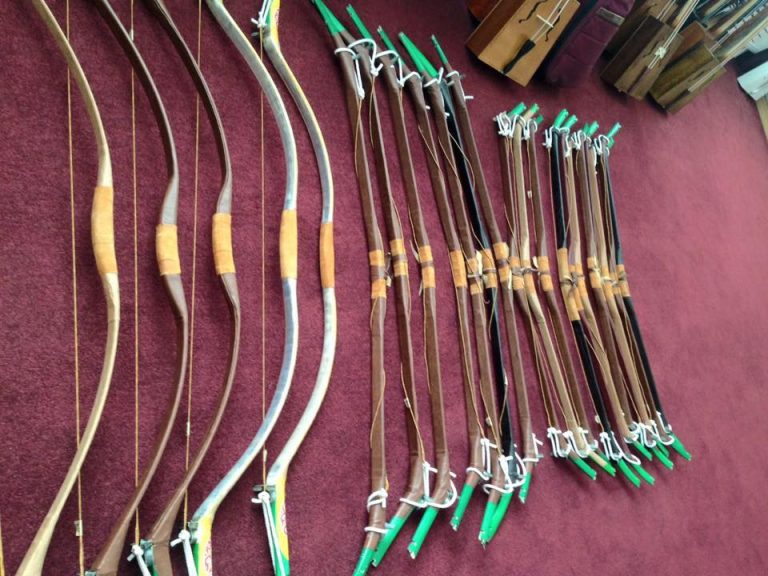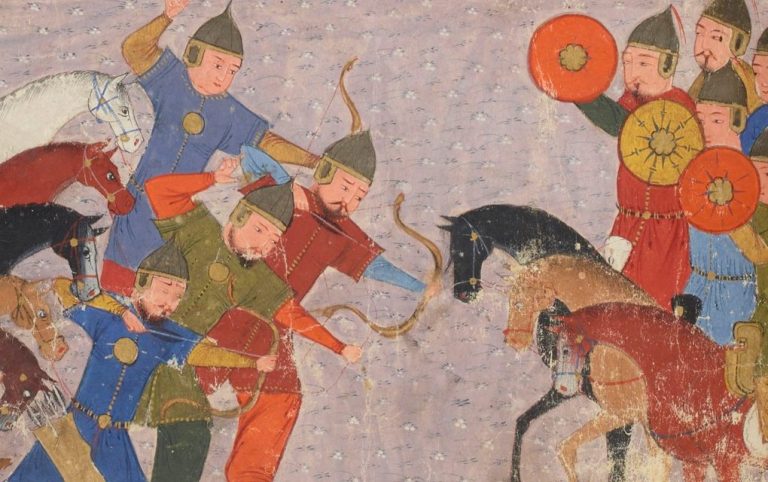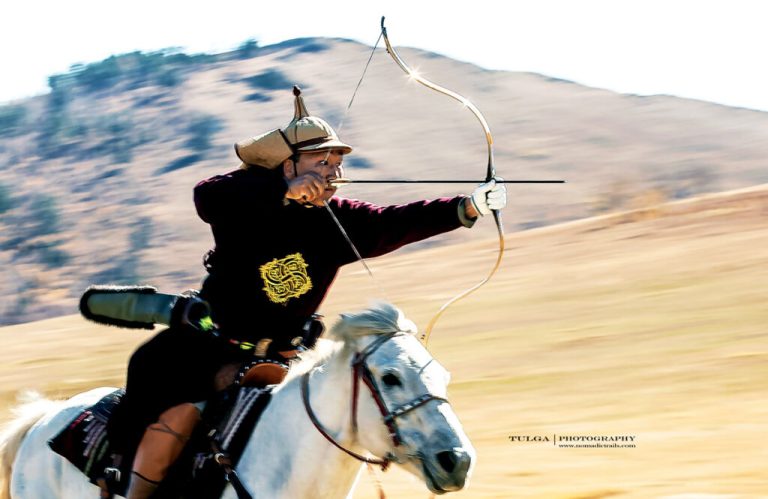The history of mankind’s development has always been intertwined with the development of tools and weapons. Chief among these are the bows, tools that have been pivotal in hunting, warfare, and survival for thousands of years.
The versatility of bows, their accessibility, and their adaptability to different environments, made them indispensable in ancient societies. However, it was the evolution of the simple bow to complex forms like the composite bow and longbow that revolutionized the course of warfare and hunting.
About the Mongolian Composite Bow:
The composite bow, a product of the nomadic cultures of Central Asia, especially the Mongols, was a key instrument in their conquering spree. Unlike simple bows, the composite bow was a result of skilled craftsmanship.
This type of bow stores more energy due to its composite construction. In contrast to bows made from a single piece of wood / limb, these were made from a composite of different materials such as wood, sinew, and horn, all glued together using animal glue.
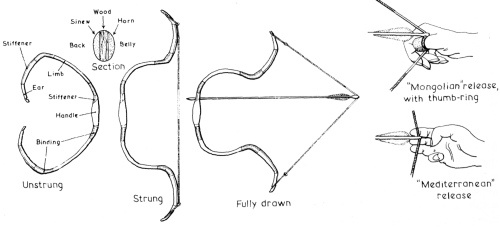
The composite bow’s construction was a long and laborious process, requiring much more time compared to simpler bows. You’re looking at something that would take weeks to make.
The process involved precise crafting of the components, careful assembly, and the patient waiting while the animal glue cured and held the components together. The final product, however, was worth all the effort, making it the best choice and weapon suited for the people of the steppe.
Penetration Power of Mongol Bows
Mongol bows, while powerful and effective, were generally not capable of penetrating full plate armor due to their thickness and protective properties.
Mongol bows were indeed more effective against lighter forms of armor such as chainmail and lamellar armor, as well as against unarmored or lightly armored targets. The bodkin arrowheads used by Mongol archers were particularly suited for piercing through gaps in armor or finding weak points in less protective armor types.
How Far Mongolian Recurve Bows Could Shoot
Historical accounts and modern experiments suggest that skilled Mongolian archers could accurately shoot arrows at targets up to 300 meters (approximately 984 feet) or more in some cases.
In practical combat situations, the effective range of Mongolian recurve bows for accurate shooting was likely shorter, typically within 100-200 meters (approximately 656 feet) or less.
However, there are legends of Mongolian archers shooting over 500 meters or almost 2000 feet.
Read: How far Mongolian bows can shoot
Pros & Cons of Mongolian Bows

Pro: Horseback use
The Mongolian armies capitalized on the composite bow’s advantages and used them to their fullest extent. They developed hit and run tactics, which were perfectly suited to their composite bows and horseback riding skills. These tactics resulted in devastating losses for their enemies while minimizing their own casualties.
Pro: Faster Reload & Superior Construction
Mongols sometimes used the Mongolian thumb release, a technique where the thumb and a strap are used to draw the bow. This technique allowed the archer to have one arrow notched on the bow and three more between the fingers, enabling four quick shots in succession if wanted.
Also the superior construction of Mongolian bows, characterized by their composite materials, reflex design, laminated construction, fine-tuning, and craftsmanship, contributed to their exceptional performance on the battlefield and their enduring legacy in archery history
Con: Difficult to maintain
However, the composite bow had a significant drawback. Its layered construction and the materials used made it susceptible to humid and wet climates. The animal glue that held the components together could weaken, and the bow could lose its shape or even break under such conditions. As a result, maintaining the integrity of the composite bow was an ongoing challenge for the Mongolian archers.
About English Longbows:
On the other side of the spectrum is the English longbow, an epitome of simplicity and power. This bow, unlike the composite bow, was made from a single piece of yew wood. The simplicity of longbow design and construction meant that it required less maintenance compared to the composite bow. Furthermore, its simple design also allowed for mass production, a factor that played a crucial role in equipping large English armies during the medieval period.
The English longbow is one of the most recognized weapons of the medieval period. Although they were initially called Welsh longbows due to their popularity in Wales, the English soon adopted this design. The longbow became a significant factor in the English victories against the French in key battles like Agincourt and Crecy.
Penetration Power of English Longbows
English longbows were particularly effective against lighter armor, such as mail or padded armor, especially at close ranges. Against heavier plate armor, the penetration power was reduced, although arrows could still cause injuries or find weak points in the armor.
How Far English Longbows Could Shoot
Historical accounts and modern experiments suggest that skilled English longbow archers could accurately shoot arrows at targets up to 200 yards (approximately 183 meters) or even farther in some cases. This distance was achievable with lighter arrows and bows with draw weights on the lower end of the spectrum.
Pros & Cons of English Bows

Pro: Easy to Produce
Unlike the composite bow, the longbow was made from a single piece of yew. The entire body of the bow was carved out of the yew, eliminating the need for complex construction or assembly. This simplicity also meant that the bow was robust and durable, capable of withstanding tough conditions without the risk of falling apart.
During the medieval period, every English household was required by law to practice archery. Given the readily available supply of yew wood, the longbows were easy to produce, and most English households knew the basics of bow making and maintenance. As a result, longbows could be mass-produced more easily than other bows or crossbows, providing the English armies with a steady supply of this powerful weapon.
Pro: Penetration Power
The English longbow was a powerful weapon, capable of delivering powerful shots and piercing armor. The longbow had a higher initial draw weight than the composite bow, which, combined with the longbow arrows’ larger size, allowed it to deliver more powerful shots.
Con: Too big
However, the longbow’s size and weight were a disadvantage. It was unwieldy in confined spaces and difficult to use on horseback, limiting its versatility compared to the composite bow.
Final Thoughts
The Mongolian composite bow, born from skilled craftsmanship, stored more energy and offered superior performance, effective against lighter armor and unarmored targets. Skilled Mongolian archers could accurately shoot arrows over impressive distances.
In contrast, the English longbow, made from a single piece of yew wood, represented simplicity and power, with its easy production, robustness, and superior penetration power making it formidable on the battlefield, albeit limited in versatility compared to composite bows.
Both bows left an indelible mark on history, shaping warfare and hunting and underscoring the critical role of bows as essential tools of human advancement.

